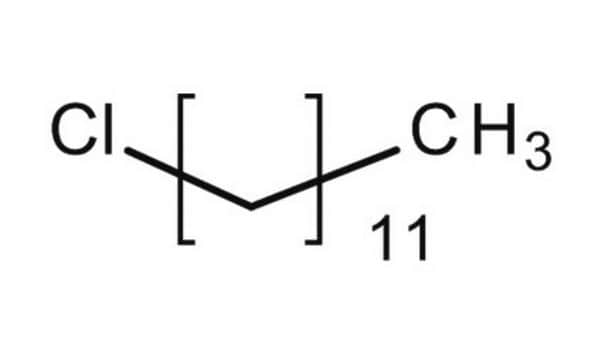371696
Tetrachloroethylene
anhydrous, ≥99%
Synonim(y):
PCE, Perchloroethylene
About This Item
Polecane produkty
klasa czystości
anhydrous
Poziom jakości
gęstość pary
5.83 (vs air)
ciśnienie pary
13 mmHg ( 20 °C)
19 mmHg ( 25 °C)
Próba
≥99%
Postać
liquid
metody
FTIR: suitable
zanieczyszczenia
<0.002% water
<0.005% water (100 mL pkg)
pozostałość po odparowaniu
<0.0005%
współczynnik refrakcji
n20/D 1.505 (lit.)
tw
121 °C (lit.)
mp
−22 °C (lit.)
rozpuszczalność
water: soluble 0.15 g/L at 25 °C
gęstość
1.623 g/mL at 25 °C (lit.)
ciąg SMILES
Cl\C(Cl)=C(\Cl)Cl
InChI
1S/C2Cl4/c3-1(4)2(5)6
Klucz InChI
CYTYCFOTNPOANT-UHFFFAOYSA-N
Szukasz podobnych produktów? Odwiedź Przewodnik dotyczący porównywania produktów
Opis ogólny
Zastosowanie
Hasło ostrzegawcze
Warning
Zwroty wskazujące rodzaj zagrożenia
Zwroty wskazujące środki ostrożności
Klasyfikacja zagrożeń
Aquatic Chronic 2 - Carc. 2 - Eye Irrit. 2 - Skin Irrit. 2 - Skin Sens. 1 - STOT SE 3
Organy docelowe
Respiratory system
Kod klasy składowania
6.1C - Combustible acute toxic Cat.3 / toxic compounds or compounds which causing chronic effects
Klasa zagrożenia wodnego (WGK)
WGK 3
Temperatura zapłonu (°F)
No data available
Temperatura zapłonu (°C)
No data available
Środki ochrony indywidualnej
Eyeshields, Gloves, type ABEK (EN14387) respirator filter
Choose from one of the most recent versions:
Masz już ten produkt?
Dokumenty związane z niedawno zakupionymi produktami zostały zamieszczone w Bibliotece dokumentów.
Klienci oglądali również te produkty
Nasz zespół naukowców ma doświadczenie we wszystkich obszarach badań, w tym w naukach przyrodniczych, materiałoznawstwie, syntezie chemicznej, chromatografii, analityce i wielu innych dziedzinach.
Skontaktuj się z zespołem ds. pomocy technicznej










